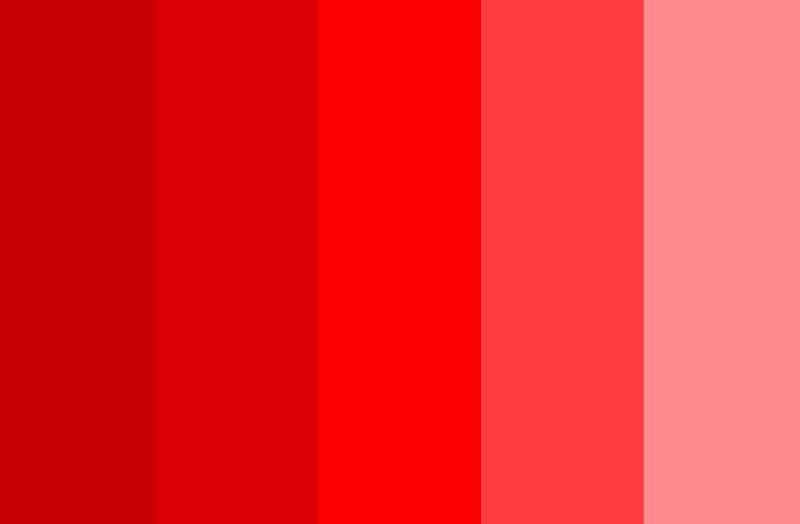Hexadecimal color representation plays a crucial role in the world of digital design and web development. Understanding these codes is essential for creating visually appealing graphics, websites, and digital content. In this article, we will focus on the vibrant spectrum of red colors and delve into the hexadecimal codes that define their various shades.
Understanding Hexadecimal Notation
To comprehend hexadecimal color representation, one must first grasp the hexadecimal numbering system, which is base-16. This system utilizes 16 distinct symbols, comprising the digits 0-9 and the letters A-F, where A represents 10, B is 11, and so forth. This notation aligns with the RGB color model, a widely used system that defines colors based on the intensity of red (R), green (G), and blue (B). It can be achieved easily with a free hex to rgb convert tool.
The Invaluable Role of Hexadecimal Codes
Hexadecimal codes act as the bridge between creative vision and digital execution. They empower designers to communicate color choices with clarity and accuracy, fostering a seamless translation of ideas into the visual language of the digital landscape. In the context of red shades, these codes play a crucial role in maintaining color integrity and harmonizing design elements, ultimately contributing to the overall aesthetic appeal of websites, graphics, and digital content.
Hexadecimal Codes for Red Colors
The RGB color model assigns values to each color channel on a scale from 0 to 255. Hexadecimal codes are used to represent these values concisely and intuitively. In the case of red colors, the hexadecimal code is particularly useful for specifying the intensity of the red channel.
Comprehensive Red Color Spectrum
| Red Shade | Hex Code |
| Red | #FF0000 |
| Dark Red | #8B0000 |
| Imperial Red | #ED2939 |
| Orange Red | #FF4500 |
| Scarlet | #FF2400 |
| Indian Red | #CD5C5C |
| Barn Red | #7C0A02 |
| Chili Red | #C21807 |
| Ruby | #E0115F |
| Maroon | #800000 |
| Fire Brick | #B22222 |
| Redwood | #A45A52 |
| Carmine | #960018 |
| Desire | #EA3C53 |
| Vermilion | #7E191B |
| Raspberry | #D21F3C |
| Candy Apple | #FF0800 |
| Persian | #CA3433 |
| Hibiscus | #B43757 |
| Burgundy | #8D021F |
| Crimson | #B80F0A |
| Rust | #933A16 |
| Light Salmon | #FFA07A |
| Salmon | #FA8072 |
| Dark Salmon | #E9967A |
| Light Coral | #F08080 |
| Brick | #7E2811 |
| Tomato | #FF6347 |
| Pale Violet Red | #DB7093 |
| Light Brick | #FB607F |
Examples of Red Colors in Hex
In the realm of digital design, hexadecimal codes serve as the DNA for colors, offering a precise and standardized way to represent hues. Let’s delve into specific hexadecimal codes for popular red shades, unveiling a vibrant palette that resonates across various design contexts. Each code is like a unique identifier, ensuring that the intended shade of red is accurately captured in the digital spectrum.
Visually Representing Selected Red Colors
To bring these hexadecimal codes to life, let’s explore a visual representation of selected red colors. This visual showcase not only enhances our understanding but also provides a glimpse into the dynamic and expressive nature of these shades. From the bold and striking to the subtle and nuanced, this representation serves as a visual guide for designers and enthusiasts alike.
Practical Applications in Web Design
Understanding hexadecimal codes for red colors goes beyond theoretical knowledge; it finds its true value in practical applications, especially in the realm of web design and digital projects. Designers wield these codes as powerful tools, enabling them to precisely define the red hues used in their creations. This precision ensures consistency across diverse platforms and devices, delivering a cohesive visual experience for users.
Conclusion
The world of digital design and web development relies significantly on hexadecimal color representation, particularly in defining the vibrant spectrum of red colors. Hexadecimal codes serve as a precise and standardized language for communicating color choices in the RGB model.
By understanding and utilizing these codes, designers can ensure consistency and accuracy in capturing the intensity of red hues across various digital platforms. The visual representation of selected red colors enhances our appreciation of their dynamic nature, and in practical applications, these codes play a pivotal role in maintaining color integrity and contributing to the overall aesthetic appeal of digital content.

































